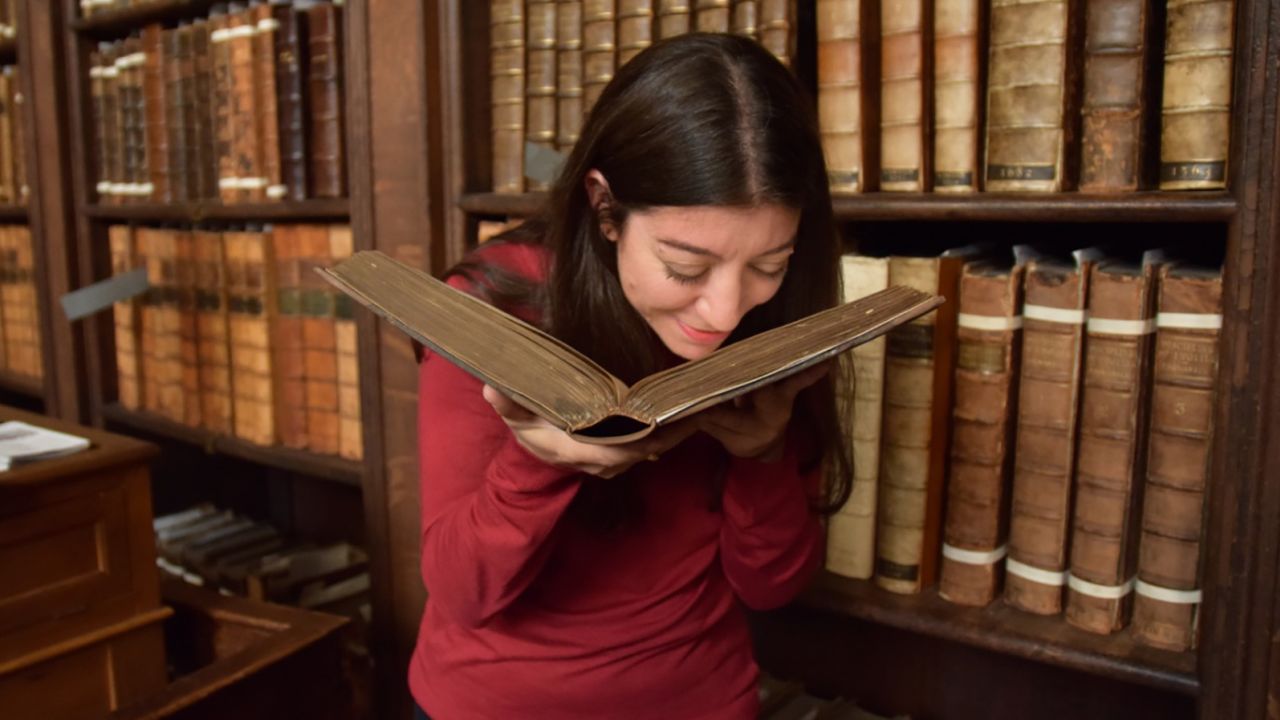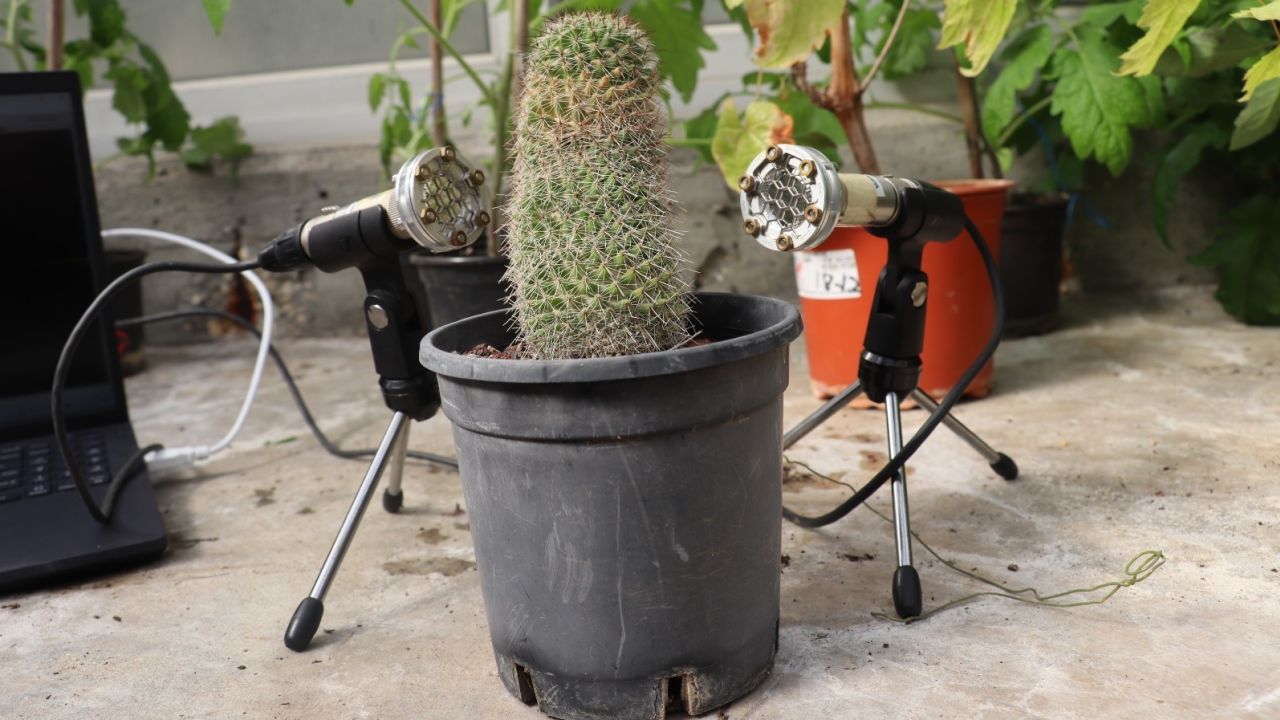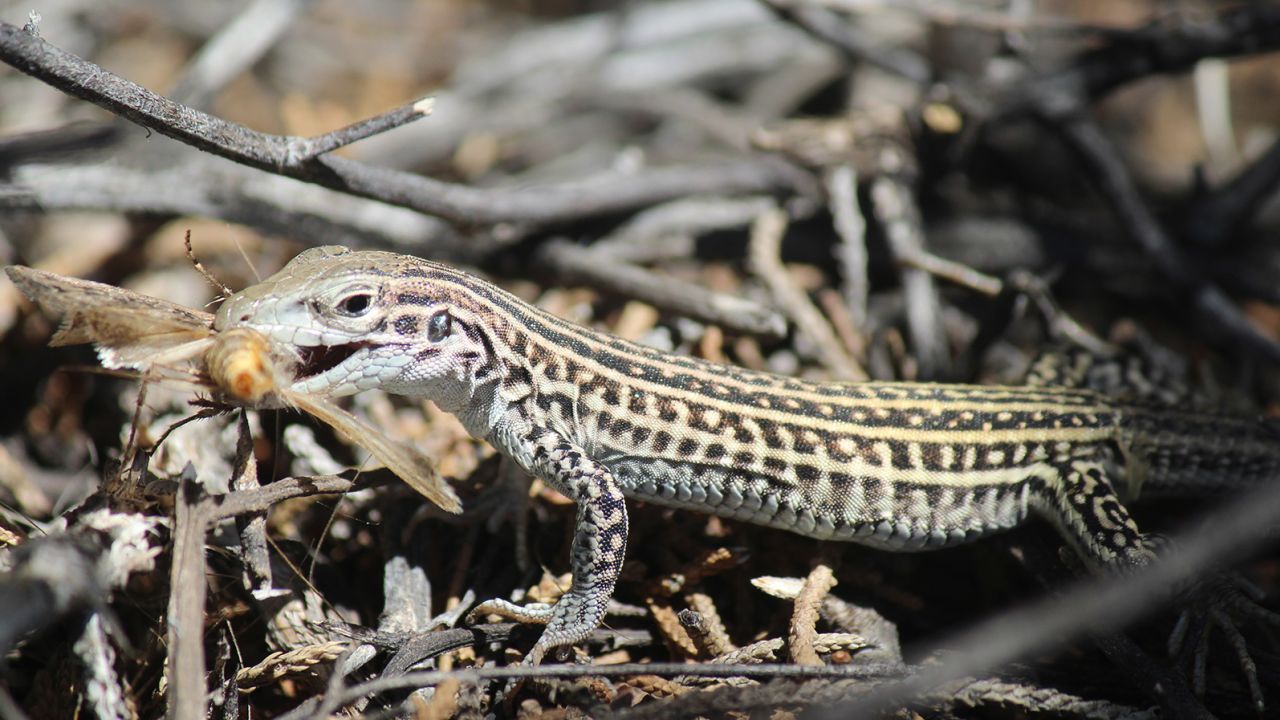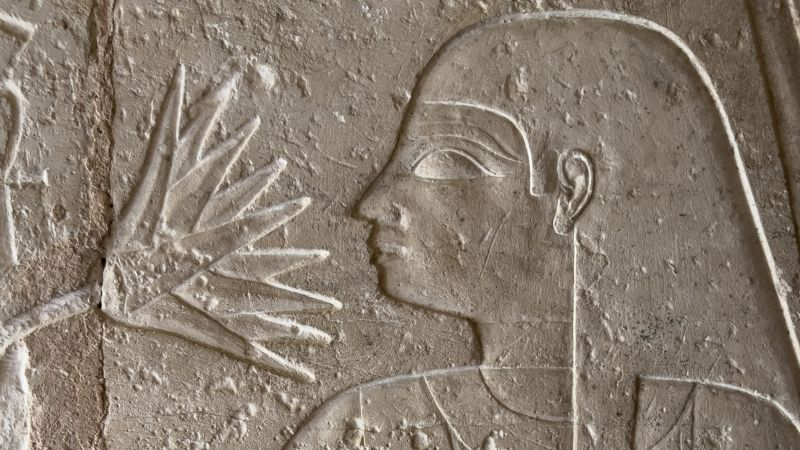A version of this story appeared in CNN’s Wonder Theory science newsletter. To get it in your inbox, sign up for free here.
CNN
—
As a child in the 1980s, I visited the Jorvik Viking Centre in York, England, to learn about the Scandinavian seafarers. The museum stank — and the stench was deliberate.
Visitors to the attraction were — and still are — treated to the unsavory odors of a Norse village: a cesspit, dead fish and woodsmoke. The trip has stuck in my mind, perhaps because the nose plays a unique role in shaping memories.
In those days, curators had to largely guess how a 10th century Viking settlement might have smelled. Today, scientists are able to decode past scents with much greater accuracy, using new and powerful biomolecular approaches to resurrect some particularly distinct ephemeral treasures.
Trailblazers

The challenge of finding past smells is figuring out how to capture a short-lived phenomenon.
Techniques like chromatography, a process for separating components in a mixture, and mass spectrometry, which can detect compounds by calculating the weight of different molecules, allow scientists to study residues left on incense burners, perfume bottles and food storage jars to reconstruct the scents of substances they once held.
Some historians and chemists are recreating the perfume that Cleopatra may have used based on recipes recorded in Egyptian texts and inscriptions on temple walls. One recipe studied by researcher Sean Coughlin of the Czech Academy of Sciences indicated that ancient perfumers heated oil for 10 days and 10 nights before infusing it with certain woods.
“That was a big mystery to us,” Coughlin said. “If you’ve ever cooked oil for 10 days it stinks.” But he soon discovered there was a method to the madness.
Look up
Tiny glass beads strewn across the moon’s surface could contain trillions of pounds of water, according to a new study of lunar soil samples collected by China’s Chang’e-5 mission — the first such specimens returned to Earth since the Apollo flights of the 1970s.
Chang’e-5, an uncrewed probe, made a soft landing on the moon’s Earth-facing northwest corner and carried a sampling of regolith, or rocky lunar soil, back home in 2020.
Scientists in China believe the glass beads could have formed as a result of asteroids striking the lunar surface. Understanding how water is stored on the moon is useful: That knowledge could point future lunar astronauts toward potential resources that might one day be converted to drinking water or even rocket fuel.
The wonder

Scientists in Israel have uncovered a hidden realm beyond our own sensory bubble.
Recordings of a number of different plant species revealed that they emit a popping or clicking sound that is not detectable by the human ear. It sounds a bit like the pop of popcorn or bubble wrap, and the plants make more sounds when they are dry or their stems have been cut.
There is no evidence that shows the noise produced by plants is intentional or a form of communication, but the sounds could convey useful information to other animals like insects, bats or moths.
Discoveries
Researchers have found an unexpected ingredient in paintings by Leonardo da Vinci and other Old Masters of the 16th through early 18th centuries. These influential artists used proteins, especially egg yolk, in their paint, according to a new study.
Trace quantities of protein residue have long been detected in classic oil paintings, but experts thought it was the result of contamination over the centuries. Now, scientists think the inclusion was deliberate.
Mixing paint with yolk might have had several enduring effects, including making expensive color pigments last longer and avoiding a wrinkling effect evident in some very famous works. The discovery might help conservators better preserve old artworks.
Once upon a planet

Human noise pollution disrupts wildlife on land and in the oceans. The sounds we make can affect how animals communicate, their reproductive behavior or where they choose to hunt.
One lizard species that exists only in a corner of Colorado has developed a unique coping mechanism for its noisy environment near the US Army’s Fort Carson military base in Colorado Springs.
When researchers recently examined blood samples from these lizards, they detected elevated stress levels caused by the din of low-flying fighter jets, transport aircraft and helicopters. The study team also found the creatures moved less, and they ate more when the aircraft noise was present.
It’s not known how this stress-eating could affect lizard populations over the long term.
Explorations
Wait, don’t miss out on these striking stories:
— Take a look at 10 searing photos that made the world wake up to the climate crisis.
— An Australian startup has crafted a meatball that incorporates a portion of an extinct animal’s DNA.
— Frank Rubio is set to break the record for the longest mission by a US astronaut, but that wasn’t the original plan.
— The Hubble Space Telescope captured stunning images of Jupiter and Uranus looking different over time.
Like what you’ve read? Oh, but there’s more. Sign up here to receive in your inbox the next edition of Wonder Theory, brought to you by CNN Space and Science writers Ashley Strickland and Katie Hunt. They find wonder in planets beyond our solar system and discoveries from the ancient world.
